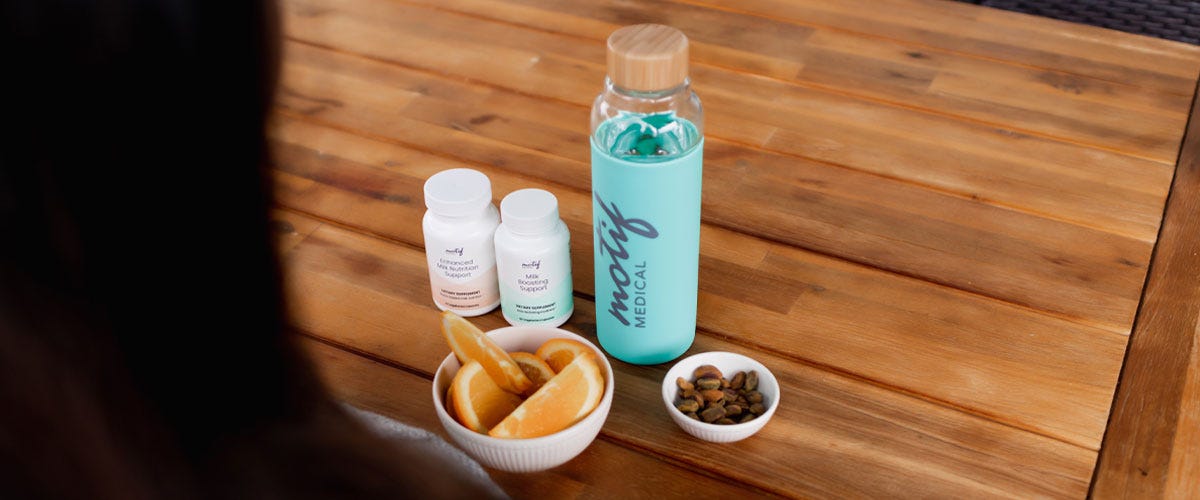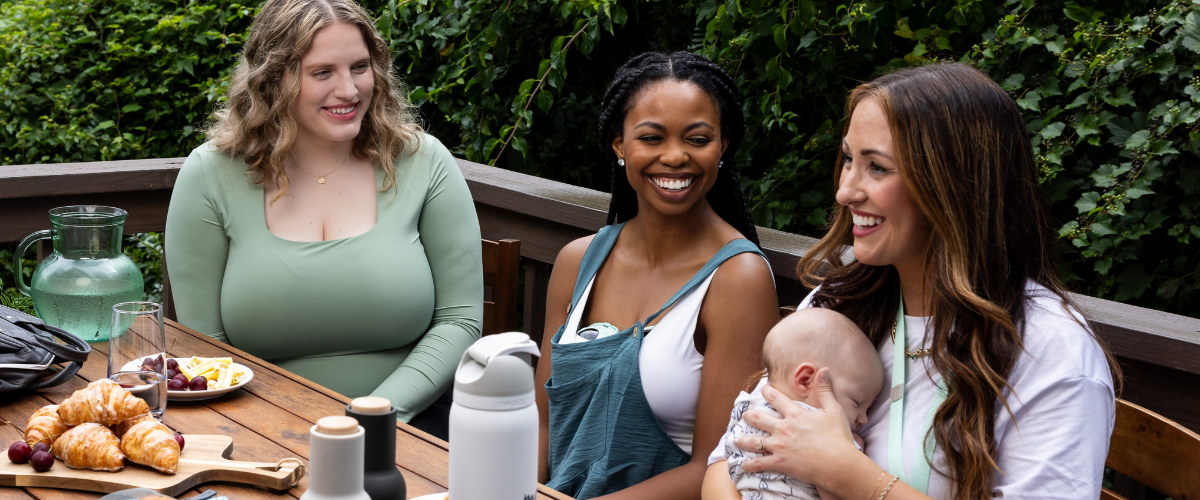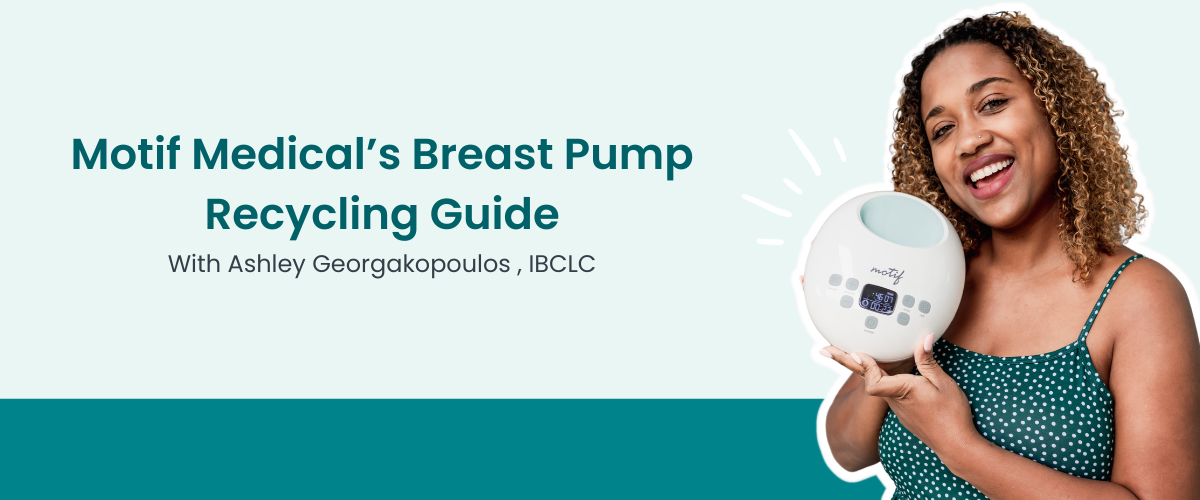Hand expressing breast milk is a useful tool for a number of reasons, such as encouraging milk flow, building breast milk supply in between feedings and pumping sessions, using in place of breast pumping, and collecting colostrum. Learning how to express breast milk can also relieve engorgement and clogged ducts, and is a priceless tool in emergencies when milk needs to be expressed or if baby is having trouble feeding. Colostrum, in particular, is more easily expressed by hand versus a breast pump, with its thick consistency and placement inside the breast.
- Free, no equipment required
- Gentle, familiar
- Convenient
- When combined with breastfeeding or pumping, encourages higher volume output, more milk
- Therapeutic for breastfeeding obstacles
The hand expression technique is gentle, skin-to-skin contact. This encourages a positive response from the breast tissue, allowing milk to flow more readily. The milk let-down reflex is sensitive to hormone fluctuations, nerve response, heat and relaxation.
Before you get started
Make sure to wash your hands. Have a clean container to collect the milk. For manually expressing colostrum, a spoon or medicine cup is the perfect size. For mature milk, larger volume, using a bowl, cup, or bottle with a funnel is great for collecting. You can also use the flange from your breast pump equipment as a funnel!
To prep the breasts, it's encouraged to massage and gently squeeze around them. Applying a warm towel, heat compress, or warm water is particularly helpful, too. This is also a time to take a deep breath, relax, smell your baby or their clothing, and get into the mindset.
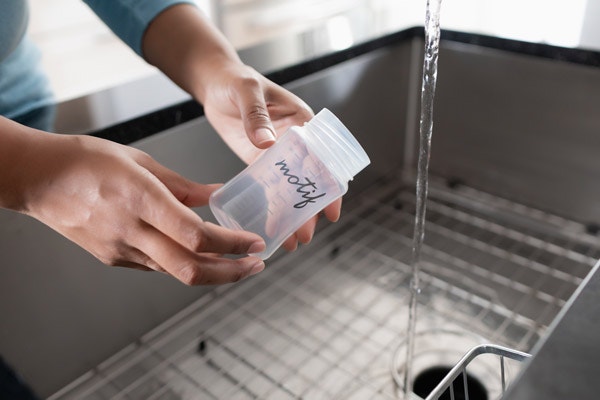

Stimulation is the next step. This is achieved by gently stretching the nipple repeatedly, encouraging blood flow to the area. Once the nipples are firm, you are ready to begin, and may already see, or feel, milk flow or drips. Using a manual breast pump or a gentle setting for 2-3 minutes on an electric pump can also help to stimulate the nipples.
Hand Expression Technique
- Make a "C" with one of your hands.
- Place around the areola.
- Before squeezing, press back gently and evenly around the areola.
- Sandwich-squeeze while the breast is pressed back.
- Keeping the fingers in place, rock the knuckles forward toward the nipple, still gently squeezing. Think of it as kneading dough: no rubbing, just rolling pressure.
- Repeat this motion.
- After a few minutes, you can rotate your hand all around the "circle," like a clock. Adjust from "12 and 6" to "3 and 9" for example.
- Use your other hand to massage the breast where needed or hold the milk collector.
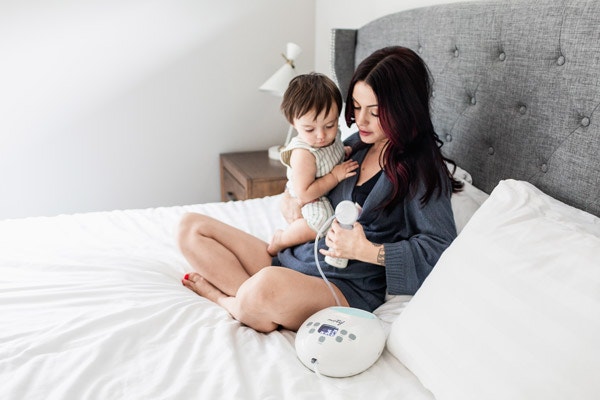

Now that you have taken time to prepare the breasts and stimulate them, it's time to start expressing. Think of the breasts as a circle, with the areola as the center. The areola is the darkened area around the nipple, and is where all of the milk channels from milk ducts come to a head before exiting through the nipple, which is designed similarly to a shower head. This is why you need to place your fingers just on the outside, or on the line, of the areola so as not to cut off the flow.
The overall session is a repetitive, rhythmic pattern. Technique and stimulation is more important than how hard you squeeze. This is a similar concept with pumping and strength settings. Remember that both techniques are in place a of baby feeding directly, and so are simulating how a baby would extract milk: gentle suckling, massaging with their hands, and repetitive action.
Step Breakdown
Keep in Mind
Hand expressing milk, depending on the intention, can take 20-30 minutes.
This is also a technique that takes practice and patience.
You may not get "enough milk" for the intention, but every drop counts, and can be added to milk collected through breast pumping, as well as to supplemental formula. The action alone may help to stimulate future production potential.
Hand expression should not be painful or uncomfortable. Rubbing the skin, squeezing too hard, or trying for too long may cause this technique to be counter productive, and not produce the results you are looking for. For best results, keep this a comfortable, quiet, relaxing tool to achieve maximum milk production potential and collection.
Breastfeeding support from a trained health care provider, particularly a lactation consultant (IBCLC), is always recommended to have. They can teach how to express your breast milk on an individual level, counsel goals, and aid you through obstacles.



